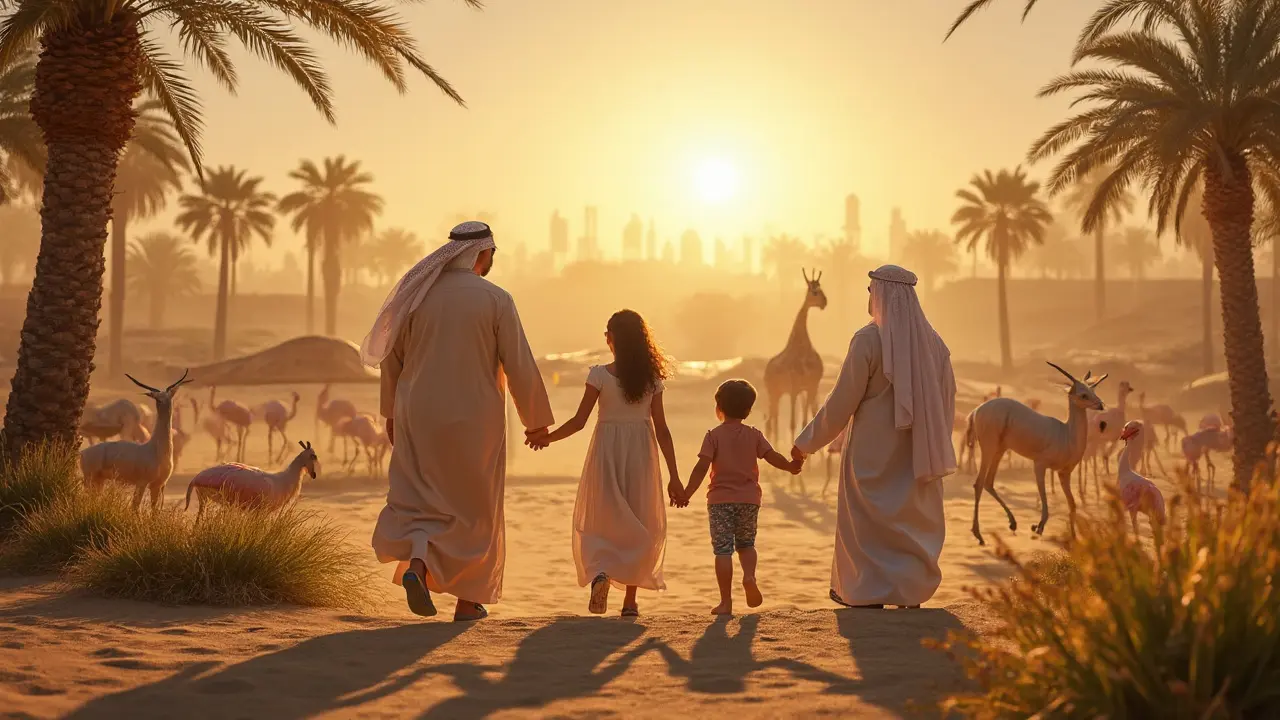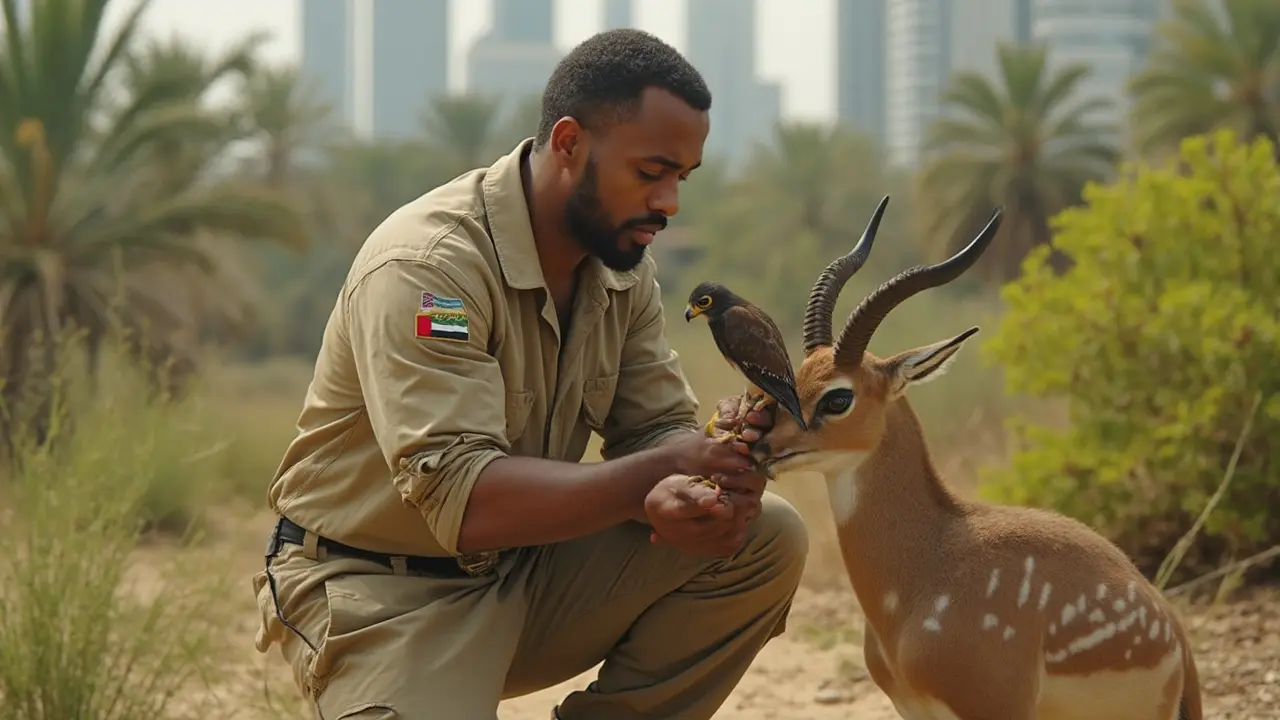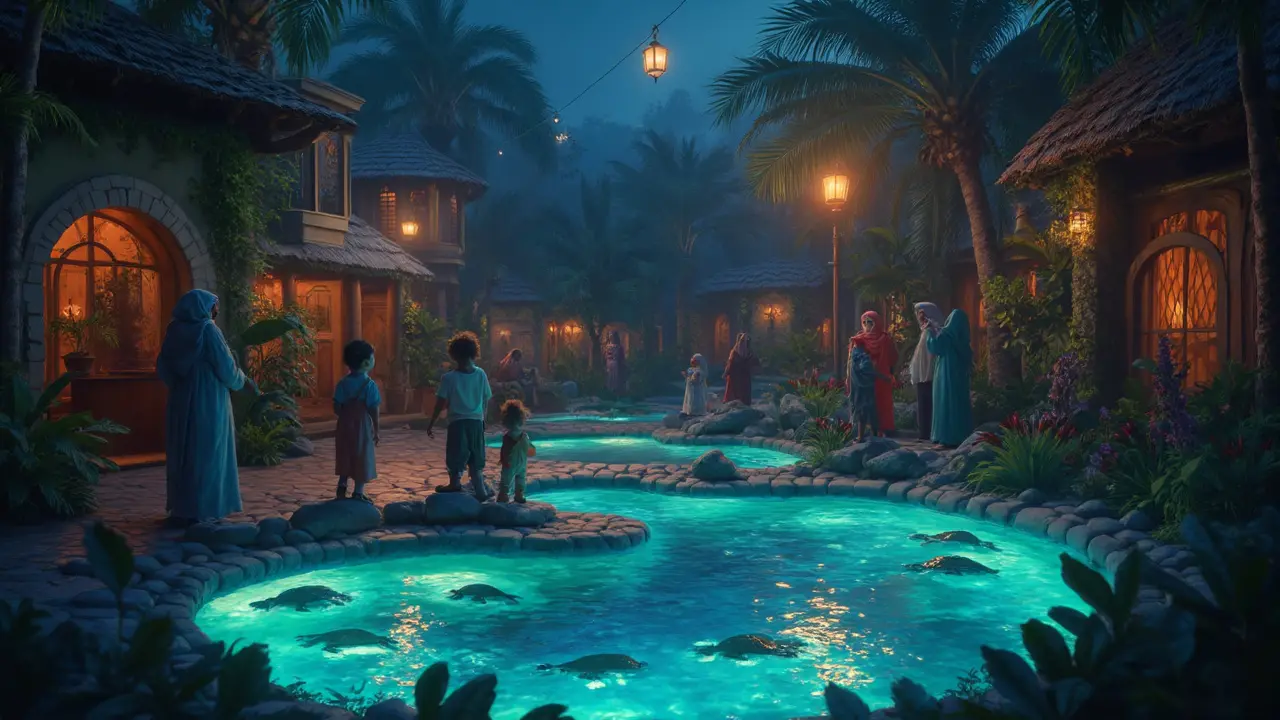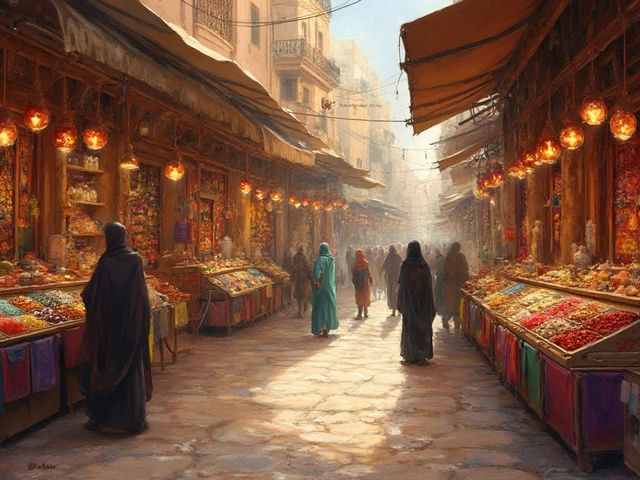
Waking up in Dubai, you’re always just a quick drive from a scene you might think only belongs on a nature channel: Arabian oryx jogging across wild sand, rescued turtles cruising in turquoise lagoons, or families giggling as parrots perch on shoulders. Some think skyscrapers and mega malls define the city, but for those with a curious heart (or hyper kids to entertain), Dubai’s wild side is a whole other adventure. People here blend centuries-old traditions with a passion for the future, so it makes sense that you’ll find some of the most creative and accessible ways to see wildlife, right inside this modern metropolis.
Dubai Safari Park: Africa in the Desert
When you hear “Safari” in Dubai, think more than just lions behind fences. Dubai Safari Park, sprawling over 119 hectares, is built like a patchwork of continents. The village zones—Africa, Asia, the Explorer, and the Arabian Desert Safari—pull you into scenes straight out of your travel bucket list but without the jetlag. You walk through shaded paths where giraffes munch on acacia leaves while mischievous monkeys brainstorm ways to swipe your snacks. The clever design isn’t accidental; the park invested millions in sustainability, running on solar energy and recycling water. That’s pretty forward-thinking, especially for a place in the desert.
If you’ve got energetic kids or skeptical teens, nothing wins them over like the daily live animal shows. Trainers lead rescued birds of prey into dramatic dives, while elephants and hippos demonstrate just how much character they have. Don't miss the Safari Journey drive: hop on a bus with massive windows and cruise through open habitats, getting close to zebras and cheetahs (who, trust me, are not shy about staring back at you). Tip: mornings are best for animal activity—it gets toasty after noon, even in winter months.
The conservation side is strong here. Many of the animals—from white lions to Arabian wolves—are part of breeding programs to help keep their species going strong in the wild. A sign near the cheetah exhibit made my son stop in his tracks: “There are fewer than 7,000 cheetahs left in the wild, but you can help.” And that’s the vibe at this park: you’re not just gawking, you’re learning (sometimes without even realizing it).
Food-wise, Dubai Safari Park has realized that hungry guests turn grumpy—so you’ll find snack shacks serving shawarma, fresh juices, and kid-friendly bites everywhere. Guided tours in English and Arabic mean no one misses the story behind the spectacle. “The Safari Park showcases not just animals, but the relationship between people and nature—a lesson everyone in Dubai can appreciate,” says Dr. Reem Al Raqbani, a respected Emirati wildlife biologist.
| Area | Wildlife Highlight | Unique Experience |
|---|---|---|
| Safari Drive | Zebras, rhinoceros, cheetahs | Guided bus safari |
| Asia Village | Elephants, tigers, gibbons | Interactive feeding sessions |
| Arabian Desert | Oryx, gazelle, wolf | Camel rides |
Ras Al Khor Wildlife Sanctuary: Flamingos on Dubai Creek
Out at the edge of the city, practically hugging the legendary Dubai Creek, you’ll find a serene contradiction: thousands of flamingos, knee-deep in brackish water, set against that intense skyline. Ras Al Khor means “Cape of the Creek,” and this wetland sanctuary isn’t a human-fancy exhibit—it’s seriously protected land, guarded by the Dubai Municipality for more than 20 years. Entry is free, but visits here are on nature’s terms. Between autumn and spring, wild flamingos gather by the hundreds to feed and preen, creating a head-turning wave of pink.
If you’re used to parks feeling a bit too curated, Ras Al Khor is deliciously wild. Three sturdy bird hide structures let you get right up close—bring binoculars if you want nerdy bonus points. Ospreys, sandpipers, and herons breeze overhead, making this spot an unlikely favorite for both birders and Instagrammers. It’s where Liam and I ended up one overcast morning, just to take a breath from city noise, and the only sounds were wingbeats and the occasional splashing fish.
This sanctuary is part of Dubai’s bigger plan to balance rapid development with real preservation. Ras Al Khor is regularly cited as a model urban wetland, ranking alongside famous reserves like the UK’s WWT Slimbridge. Over 470 species have been recorded here—a staggering number when you remember this spot faces skyscrapers. If you visit on a weekday morning, you could easily have the place almost to yourself. Just remember, picnics and loud music are a no-go (there are security patrols), but photography and respectful observation are encouraged.
Here’s a tip local parents shared with me: bring snacks and water for the kids, but be sure not to litter; trash does real harm to the birds and ecosystem. The volunteers here love to chat and answer questions, so don’t hesitate—this is not just a walk, it’s an education in what’s possible when a city cares enough to protect its wild heritage.

Al Marmoom Desert Conservation Reserve: The Original Arabian Experience
Ask anyone in Dubai about their favorite wild escape, and you’ll hear this name again and again—Al Marmoom is practically a legend. Spanning 10% of the Emirate, it’s the UAE’s biggest unfenced nature reserve, and a unique chance to see what the desert looked like before highways and high-rises. Think endless stretches of sand, low-lying ghaf trees, and silent salt flats where Arabian oryx and gazelle roam as they did for centuries. Al Marmoom was set up with local customs in mind. You’ll see Bedouin-style camps where you can sip qahwa (Arabic coffee) or watch falconry—an art passed from father to son for generations. Some camps even host traditional poetry and oud music nights. Want to feel the real Middle East? Try a camel ride at dawn—out here, it’s not just a tourist stunt.
There are guided wildlife drives at sunrise and sunset, usually in a convoy of eco-friendly vehicles. Guides are happy to point out tiny sand fish or elusive desert foxes, which can vanish between the dunes in a blink. My favorite moment was spotting an oryx herd silhouetted against an orange sky, feeling just how endless and powerful this land really is. There’s a huge push to involve Emirati youth in conservation, with regular workshops teaching tracking, botany, and desert survival skills.
If you’re curious about stargazing, Al Marmoom is a top pick—the Dubai Astronomy Group hosts events out here when the sky is clear. Outside the busy event calendar, though, the place is peaceful. No shops, no playgrounds, just deep silence and animal tracks crisscrossing the sand. Tip: Don’t try to explore off-track in a regular car; the dunes are tricky and it’s easy to get stuck (says the voice of experience).
“The oryx moved from rare and nearly extinct, to common and protected, thanks to reserves like Al Marmoom,” says Dr. Saeed Al Thani, UAE desert ecologist. “It’s proof that ancient traditions and modern conservation can work together.”
The Green Planet: Rainforest in City Center
Whenever I need to remind myself what humidity feels like (you know, pre-AC days), I head to The Green Planet. Inside City Walk’s glass bio-dome, you’re transported from Dubai’s heat into a bubble of tropical chaos: tall trees, rushing waterfalls, and the chattering of toucans and sloths overhead. Over 3,000 species, from insects to pythons, call this place home. That means you’re ducking butterfly clouds one minute and watching bats swirl around a fig tree the next. It’s wildly photogenic—especially when a friendly sloth stretches out for breakfast only a few feet away.
The Green Planet is made for hands-on learning. “Zookeeper for a Day” programs are super popular with kids and the young-at-heart. You help prep animal meals, shadow biologists, and even hold a python (yes, it’s just as weird as it sounds). With bilingual signage and staff happy to chat in English or Arabic, nobody leaves feeling lost or left out. One smart feature: all animal encounters here are strictly managed to align with international ethical standards.
Ever heard of a three-toed sloth who loves to nap next to a birthday party? The staff have stories about every animal and are always ready with quirky facts. For food, there’s a cute eco-café serving rainforest-inspired snacks—try the cacao smoothies or pandan cake, favorites with local school groups on field trips. Book your tickets early on weekends; families and tourists flock here for air-conditioned adventure. If you want fewer crowds, weekday afternoons are best.
There’s no denying the educational punch either. Infographics everywhere explain rainforest ecology and why biodiversity matters—even for a super-modern city like Dubai. Don’t miss the nocturnal chamber, where creatures like sugar gliders and glowing frogs reveal what “night shift” really looks like in the jungle. For someone living in Dubai, it’s a rare reminder that wildness can exist next door, even in the heart of downtown.

Special Experiences and Tips: Encountering Wildlife, Dubai-Style
There’s more than one way to chase a thrill in Dubai, and not all of them involve rollercoasters or dune buggies. Sometimes, the best stories come from wild moments you didn’t plan. Ever watched turtle hatchlings scramble to the sea at dawn? Jumeirah’s Turtle Rehabilitation Sanctuary hosts annual public releases, a hands-on conservation event that draws hundreds of Dubai families. As a result of over a decade’s work, more than 2,000 endangered turtles have returned safely to the Gulf.
Want to walk with a falcon on your arm? Traditional falconry sessions are available at several eco-lodges and resorts on the city’s outskirts. Guides share the deep history and strict laws around these majestic birds, considered UAE national treasures. Kids as young as six can try handling a falcon (gloves provided) and learn how the birds hunt—no flashy tricks, just authentic heritage.
For those who love night adventures, Dubai now has guided nocturnal safaris at Al Marmoom and Dubai Desert Conservation Reserve. These nighttime tours, run by trained rangers, let you spot owls, jerboas (small hopping rodents), and the odd desert hedgehog scurrying past under the stars. The cooler hours are when many animals are most active, and it’s an entirely different vibe than daytime trips. If you’re more the independent type, kayak tours through the mangroves at Jebel Ali Wildlife Sanctuary give you the best chance to paddle alongside fish, crabs, and even the occasional flamingo.
- Always check opening hours; summer timings may change due to heat.
- Respect local rules around photography—in sensitive reserves, flash is usually banned to protect the animals.
- Dress modestly, especially in community-run wildlife areas; long sleeves and sun hats are smart both for culture and comfort.
- Bring reusable water bottles; plastic is being phased out at many sites, and Dubai’s water quality is excellent.
- Encourage kids to ask guides questions—it sparks deeper curiosity and is actively encouraged by staff at every park.
Dubai isn’t just about glitz or adrenaline—sometimes, the magic is watching a gazelle dart past just meters away, or hearing kids squeal as parrots land on their shoulders. Don’t wait until visitors are in town to explore; the wild heart of Dubai is alive and evolving, and you’re never more than an hour from a world few ever see. Get outside. Be patient. And if you spot me wrangling my own mini-wildlife (a.k.a. my kids), come say hi—I’ll happily swap animal stories with anyone.”



